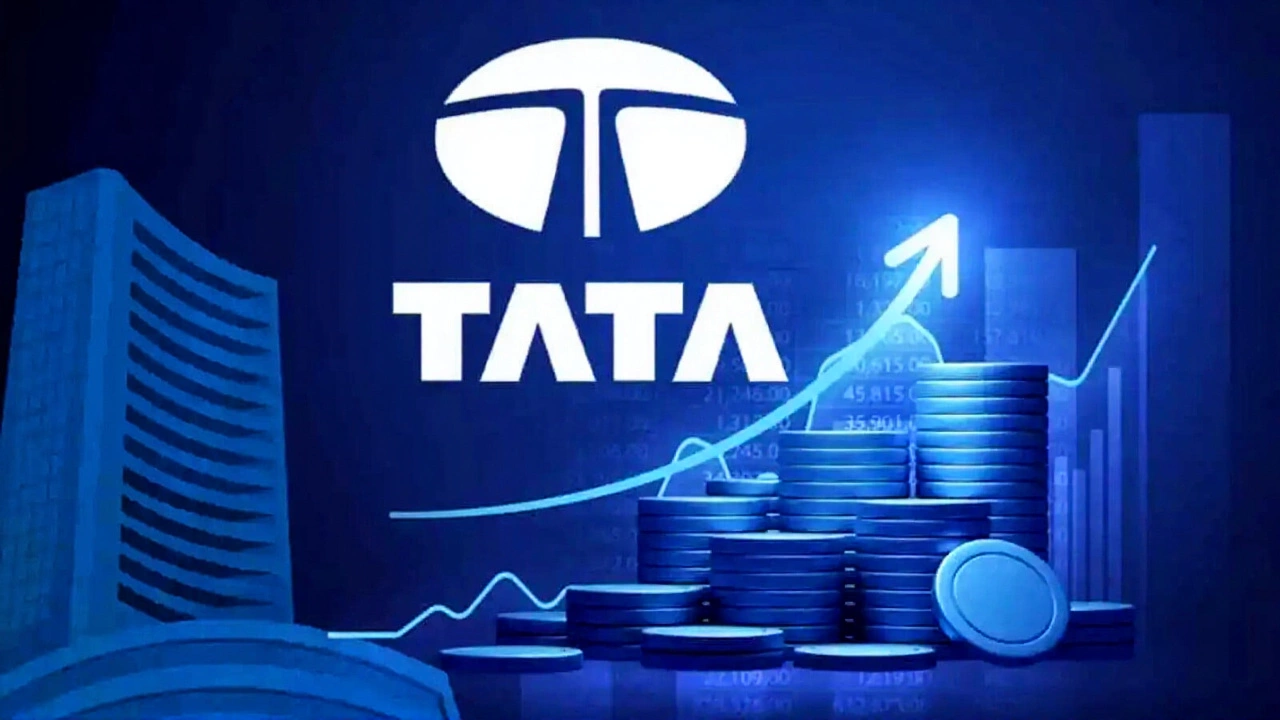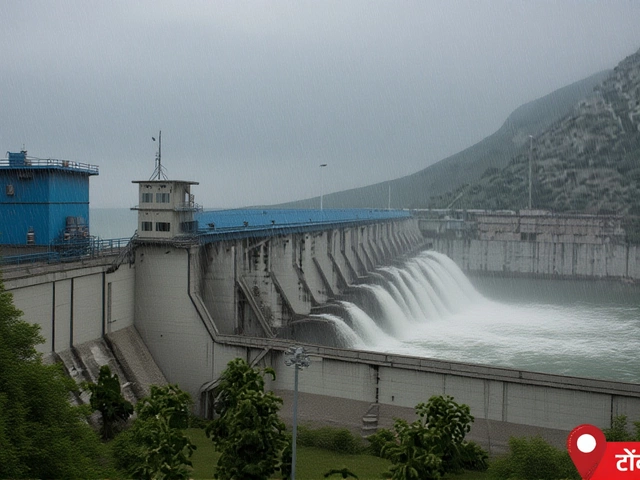When PhysicsWallah listed on the National Stock Exchange on November 18, 2025, it didn’t just open — it exploded. Shares surged 33% from its issue price of ₹109 to ₹145, making it the hottest IPO of the week. But by November 20, the rally had collapsed. Traders had booked profits. The stock slid back to ₹122. The same story played out for Tenneco Clean Air India, which jumped 27% on debut, then lost nearly half its gains in 48 hours. What happened? A perfect storm of hype, mismatched valuations, and a market that suddenly remembered it had to be rational.
Why PhysicsWallah’s IPO Became a Cultural Event
PhysicsWallah isn’t just a test prep company. It’s a phenomenon. Founded by Alakh Pandey, a former IIT tutor turned YouTube sensation, the company turned free educational content into a ₹3,480 crore business. Its IPO, open from November 11 to 13, 2025, drew a staggering 174.78 times subscription from Qualified Institutional Buyers — a record for a non-fintech startup. Retail investors weren’t far behind, subscribing 5.37 times. Anchor investors alone committed ₹1,200 crore before the IPO even opened.But here’s the twist: the company’s valuation was built on growth, not profits. In FY2025, PhysicsWallah reported a net loss of ₹189 crore despite ₹1,100 crore in revenue. Investors weren’t buying earnings — they were buying the dream of a digital education monopoly. The Grey Market Premium (GMP) swung wildly — from ₹67 to ₹8 — reflecting confusion between retail hype and institutional caution. When it listed, the market said: “We believe.” Then, two days later, it said: “We’re not sure.”
Tenneco Clean Air: The Industrial Giant with a Wild Valuation Gap
While PhysicsWallah was the darling of students and influencers, Tenneco Clean Air India — a subsidiary of the U.S.-based Tenneco Group — represented the old guard turning new. The company, which manufactures emission control systems for vehicles, priced its ₹3,600 crore IPO at ₹378–397 per share. The GMP? One source said ₹123. Another said it was flat. The disconnect was telling.On paper, Tenneco Clean Air had solid fundamentals: ₹2,100 crore in revenue, 18% EBITDA margins, and a dominant position in India’s tightening emissions market. But its price-to-earnings ratio of 78x was higher than many tech firms. When it listed at ₹495 — a 27% premium — analysts gasped. By November 20, it had dropped to ₹410. The market had priced in future growth. Then it realized: this isn’t a startup. It’s a mature industrial player. And industrial players don’t trade at 80x earnings.
Emmvee Photovoltaic Power: The Quiet Contender
Meanwhile, Emmvee Photovoltaic Power quietly opened its ₹2,900 crore IPO. With no Grey Market Premium — GMP at ₹0 — and a price band of ₹206–217, it flew under the radar. But its numbers tell a different story. As of May 31, 2025, Emmvee had a solar module production capacity of 7.8 GW and cell capacity of 2.94 GW — making it India’s largest pure-play solar manufacturer. The government’s Production Linked Incentive (PLI) scheme for solar manufacturing could be a game-changer. Yet, investors stayed away. Why? Lack of brand recognition. No viral founder. No YouTube channel. Just factories, polysilicon, and balance sheets.
Groww: The Brokerage That Became a Stock Market Barometer
The real story isn’t just PhysicsWallah or Tenneco. It’s Groww. The fintech app, which became the default platform for India’s 100 million+ retail investors, listed on November 18 with a 12% premium. But its fate is tied to something deeper: trust. Groww’s IPO was a referendum on whether retail investors still believe in tech valuations. Its shares fell 7% by November 20, not because of poor performance — it posted a 42% YoY revenue jump — but because investors now see its business model as fragile. With a one-month lock-in ending December 10, 2025, and quarterly results due November 21, the next 10 days could trigger a sell-off by early investors.What’s Next? The Market Is Resetting
This IPO week — November 10–21, 2025 — wasn’t just about new listings. It was a reckoning. After two years of sky-high valuations, the market is recalibrating. PhysicsWallah’s 33% pop? A sentiment-driven bubble. Tenneco’s 27% jump? A valuation mismatch. Emmvee’s silence? Rationality. And Groww’s stumble? A sign that even fintech darlings aren’t immune.What’s clear: Indian retail investors are no longer blindly chasing IPOs. They’re watching the post-listing charts. They’re reading the fine print. They’re asking: “Is this company worth it — or just hot?”

Key Dates to Watch
- November 21, 2025: Groww’s Q2 earnings report — a critical test of its unit economics.
- December 10, 2025: End of lock-in for Groww’s pre-IPO investors — potential flood of shares hitting the market.
- December 15, 2025: Scheduled listing of Lenskart Solutions — another high-profile tech IPO to watch.
- January 2026: Regulatory review of IPO pricing norms by SEBI, possibly triggered by this week’s volatility.
Frequently Asked Questions
Why did PhysicsWallah’s stock drop after such a strong debut?
PhysicsWallah’s 33% listing gain was fueled by retail frenzy and hype around its founder, Alakh Pandey, not fundamentals. The company still reported a net loss of ₹189 crore in FY2025 despite ₹1,100 crore in revenue. Once early buyers cashed out, the lack of profitability and high valuation (over 100x revenue) caused a sharp correction. The market realized it was paying for a brand, not a business.
Is Tenneco Clean Air India a good long-term investment?
Tenneco Clean Air has strong fundamentals — 18% EBITDA margins and dominance in India’s emission control market — but its IPO valuation was inflated. At 78x P/E, it’s priced like a high-growth tech firm, not a capital-intensive industrial player. For long-term investors, it’s a buy only if you believe India’s auto emissions regulations will tighten dramatically over the next five years. Short-term traders should avoid it after the profit-taking surge.
Why did Emmvee Photovoltaic Power’s IPO get no premium?
Emmvee, despite being India’s largest pure-play solar manufacturer with 7.8 GW capacity, lacked marketing buzz and a celebrity founder. Investors tend to shy away from industrial firms without viral narratives, even if they’re profitable. Its GMP of ₹0 reflects investor caution — but also opportunity. If the government accelerates PLI scheme disbursements, Emmvee could become a hidden gem.
How did Groww’s IPO performance reflect broader market sentiment?
Groww’s 12% listing gain followed by a 7% pullback signaled that retail investors are losing faith in tech valuations without clear paths to profitability. Though it posted 42% revenue growth, its business model relies heavily on commission income from trading — a sector under pressure from zero-commission rivals. The December 10 lock-in expiry could trigger heavy selling, making it a key indicator for India’s retail investor confidence.
Are IPOs in India becoming too speculative?
Yes — and this week proved it. PhysicsWallah’s 174x institutional subscription wasn’t about financials; it was about positioning. Investors are betting on future disruption, not current earnings. SEBI may need to tighten disclosure norms for loss-making companies going public. The real risk isn’t just volatility — it’s eroding trust in IPOs as a legitimate wealth-building tool for ordinary Indians.
What should new investors do after this IPO week?
Avoid chasing listing gains. Look for companies with clear revenue models, positive cash flow, and regulatory tailwinds — like Emmvee in solar or Tenneco in emissions. Skip the hype-driven names unless you’re prepared to hold for 3–5 years. And never invest more than you can afford to lose — especially in IPOs with no track record of profitability.





